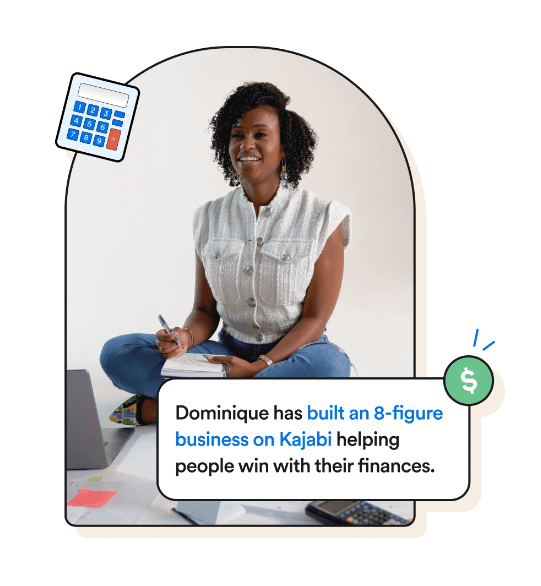Today, I want to share with you a game-changing platform that has revolutionized the way I deliver my online courses and skyrocketed my business success. If you’re an expert, coach, or business owner looking to make a massive impact with your knowledge, then get ready to explore the incredible world of Kajabi!
Over the years, I’ve come across countless platforms claiming to be the ultimate solution for course creators, but nothing compares to the seamless experience and exceptional features that Kajabi offers. From course creation to marketing, this all-in-one platform has truly transformed the way I do business.
Why Kajabi, you ask?
Let me tell you, when I first stumbled upon Kajabi, I was blown away by its capabilities. Not only does it provide a user-friendly interface for creating and delivering content, but it also empowers me to connect deeply with my audience. Here are just a few reasons why Kajabi has become my go-to platform:
- All-in-One Powerhouse: Kajabi brings together everything you need to create, market, and sell your online courses in one place. No more juggling between different tools or struggling with complicated integrations. With Kajabi, I effortlessly manage everything from course hosting to email marketing campaigns, saving precious time and effort.
- Course Creation Made Easy: As a content creator, my focus is on delivering high-quality material to my students. Kajabi’s intuitive course creation tools allow me to upload videos, audios, PDFs, and other content with ease. Plus, I can structure the courses just the way I envision, ensuring a seamless learning experience for my students.
- Customizable Website Templates: Your brand matters, and Kajabi understands that. With a range of stunning website templates, I was able to create a professional and branded course site that resonates with my audience. It’s not just about content; it’s about creating a memorable online presence.
- Unparalleled Marketing Arsenal: Kajabi equips me with powerful marketing features that have transformed my business. From email campaigns to sales funnels, I can effortlessly nurture leads and convert them into loyal students. It’s like having a team of marketers working behind the scenes!

Now, you might be wondering, “Is Kajabi really worth the investment?”
I get it; choosing the right platform is crucial for your business. But let me assure you, the value Kajabi brings to the table far outweighs the investment. Think about it; with Kajabi by your side, you’ll be able to focus on what truly matters – creating amazing content and impacting lives – while leaving the technical hassles to the platform.
Action time!
►► Grab your FREE trial of Kajabi + $5,995.00 of FREE bonuses here: https://danlok.com/kajabi/ ◄◄
Are you ready to get paid for what you know?
►► Watch the FREE masterclass here: https://www.getpaidmasterclass.com ◄◄
In conclusion, Kajabi has been a game-changer for my online course business. Its user-friendly interface, powerful features, and ability to handle everything in one place have allowed me to scale my impact and income beyond my wildest dreams. So, if you’re serious about unleashing your full potential and creating a thriving online course business, Kajabi is your secret weapon.
Let’s take the leap together and unlock a world of possibilities with Kajabi!
To your unstoppable success,
Dan Lok
